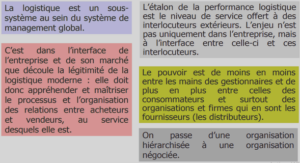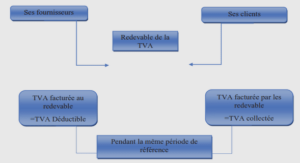Importance et dynamique saisonniere du phytoplancton
Le phytoplancton constitue la première voie d’ incorporation du carbone inorganique dans les écosystèmes marins à travers le processus de photosynthèse ; le carbone biogénique phytoplanctonique est ensuite transféré vers les niveaux trophiques supérieurs par broutage (Legendre 1990). Le carbone phytoplanctonique peut être exporté en profondeur vers les réseaux trophiques benthiques et conduire à la séquestration de carbone à long tem1e (Legendre & Le F èvre 1995). Le transfert du phytoplancton à travers l’écosystème pélagique est fonction de la taille des cellules phytoplanctoniques. Selon la taille des cellules, le phytoplancton est divisé en picophytoplancton «2 ou 3 /lm), nanophytoplancton (2-3 à 20 /lm) et microphytoplancton (>20 /lm) (Sieburth et al. 1978, Li 1986). Les cellules de grande taille du nano- et du microphytoplancton (généralement >5 /lm) sont préférablement exportées en profondeur (Chisholm 1992), par sédimentation de cellules intactes, de pelotes fécales issue du broutage par le meso- et macrozooplancton ou de neige marine (Legendre 1990).
Les cellules de plus petite taille (pico- et nanophytoplancton <5 /lm) , quant à elles, sont retenues dans les eaux de surface et sont broutées par le microzooplancton, alimentant ainsi le réseau trophique microbien (Legendre & Le Fèvre 1995). La production pnmalre est régie par de nombreux mécanismes physiques et chimiques, dont l’intensité du mélange vertical, l’intensité lumineuse et la disponibilité en éléments nutritifs (Smith & Sakshaug 1990). Dans les milieux marins où l’azote est l’élément nutritif qui limite la production phytoplanctonique, comme dans l’océan Arctique (Wheeler et al. J 997), l’azote nouvellement disponible dans la zone euphotique sous fonne de nitrate, provenant du mélange vertical, de remontée d ‘ eaux profondes ou d ‘ apports continentaux et atmosphériques, favorise la production de cellules de grande taille (Dugdale & Goering 1967), alors que l’azote provenant de la minéralisation bactérienne ou de l’excrétion animale sous forme d ‘ ammonium implique des cellules de petite taille (Harrison & Wood 1988, Agawin et al. 2000).
Dans l’océan Arctique, les variations du couvert de glace influencent la production phytoplanctonique (Smith & Sakshaug 1990). La présence de glace diminue fortement la pénétration de lumière dans la colonne d’eau (Palmisano et al. 1987), et le cycle de formation et de fonte de la glace contraint la période production phytoplanctonique à quelques mois (Sakshaug 2004). La saisonnalité induite par la glace est couplée à celle de l’ inclinaison solaire; les régions au-delà de 66,7°N sont soumises à l’absence totale de lumière autour du solstice d’hiver et à des périodes d’éclairement continu autour du solstice d’été (Smith & Sakshaug 1990). L’efficacité photosynthétique ainsi que le taux de croissance du phytoplancton sont fortement dépendants de l’intensité lumineuse (Sakshaug & Slagstad 1991). Dans l’océan Arctique, outre les variations saisonnières, la disponibilité en lumière est très variable, en raison de la formation importante de nuages et de brouillard, notamment lorsque les eaux sont libres de glace, et de la dérive des glaces flottantes, qui diminuent la quantité de lumière dans la colonne d’ eau (Sakshaug & Slagstad 1991). L’intensité du mélange vertical influence également l’efficacité photosynthétique du phytoplancton en exposant les cellules plus ou moins rapidement à différentes intensités lumineuses. Or les mécanismes de photoacclimatation se mettent généralement en place à des échelles de temps qui peuvent être plus importantes que celles des variations du mélange vertical ou de l’éclairement incident, générant des processus de photoinhibition (Harrison & Platt 1986). La stabilité de la colonne d ‘eau est également dictée par le cycle de fonnation et de fonte de la glace (Cannack & Macdonald 2002). Typiquement au printemps, des efflorescences algales se développent suite à l’augmentation de l’éclairement incident, à la pénétration accrue de la lumière dans la colonne d ‘eau et à la stratification induite par la fonte des glaces, et ce, jusqu ‘à épuisement des sels nutritifs disponibles dans la zone euphotique (Sakshaug 2004). D ‘autres efflorescences peuvent se produire à la suite d’ un réapprovisionnement de la couche de surface en éléments nutritifs (remontée d’eaux profondes, mélange vertical induit par le vent, apports continentaux … ) jusqu’en automne.
Phytoplankton production
Particulate primary production was estimated from six photic depths in 2002 (100, 40, 20, 10, 5 and 1 % of surface irradiance) and five photic depths in 2003 (100, 50,25 , 10 and 1 % of surface irradiance) using the 14C uptake method (Knap et al. 1996). Samples were incubated in 500 ml polycarbonate bottles (two Iight and one dark with DCMU [3- (3 ,4-dichlorophenyl)-1 , I-dimethyi urea]), inoculated with 20 to 30 f.lCi of NaH I4C03-, and placed under in situ simulated conditions in on-deck incubators, with running surface seawater and incident irradiances adjusted with neutrai density filters . The total added activity was deten11ined in triplicates by adding 250 f.ll of ethanolamine and 10 ml Ecolume scintillation fluid (lCN) to a 250 I.tI inoculated water sub-sample. After 24 hours of incubation, water sub-samples (150 ml or more) were filtered onto glass fibre filters (poresize 0.7 )lm, Whatman GF/F) (total particulate primary production) and 5)lm polycarbonate filters (Poretics) (large cell particulate primary production).
Nonincorporated 14C was removed by addition of 250)l1 of 0.5N HCL Vpon complete evaporation of the acid, 10 ml of Ecolume scintillation cocktail were added. The activity was detennined using a Beckman Liquid scintillation system 3801 Series in 2002 and a Packard Liquid Scintillation Analyzer Tri-Carb 2900 TR in 2003. Primary production rates were estimated with the actual DIC concentrations measured by coulometric titration (Johnson et al. 1993, DOE 1994). AlI counts were dark-corrected and daily pnmary production rates were integrated over the euphotic zone. Incubations were initiated early in the moming (minimal PAR) in order to reduce the variability in 14C accumulation (Mingelbier et al. 1994). Water samples for primary production measurements were taken in ice-free waters in early faH 2002 and 2003, and at stations with no or undefined sea ice coyer (i.e. partial presence of new ice) in late fall , therefore no correction for sea ice concentration was applied. The [ratio can be estimated from primary production rates following this equation : f= 0.04 + 0.74 (PUPT), r2 = 0.80, where PT corresponds to total particulate primary production in the euphotic zone and PL to large cells production in the euphotic zone (Tremblay et al. 1997). The phytoplankton new production, which corresponds to the maximum potential export of particulate primary production from the euphotic zone, can be further derived from the [ratios (Dugdale & Goering 1967, Eppley & Peterson 1979): P ex = PT x [ratio.
Physico-chemical conditions
Infonnation on the sea ice coyer during the sampling periods was gathered from the Canadian Ice Service. In 2002, stations 18 to 33 and 49 to 65 were sampled in ice-free waters, whereas stations 36 to 45 were sampled at the edge of the arctic pack ice (see Fig. la for station location). Newly fonned sea ice was present at stations 69 to 81 , while the pack ice had moved south so as both old and grey drifting ice were present from stations 83 to 92. Stations in the middle part of the Amundsen Gulf were free of ice at time of sampling (stations 95 to 101), whereas stations sampled in the southern part of the gulf(stations 3 to 15, 104, 107 and 110) were partly covered by new and grey ice. In early faIl 2003 , old ice in strips was present at stations 718 and CA 1 0 over the Mackenzie shelf. Stations CA04, CA07 and CA 13 were sampled close to the pack ice (see Fig. 1 b for station location). In the Amundsen Gulf, ail stations were ice-free the second week of October 2003. In late fall 2003, newly fonned sea ice was present over the Mackenzie shelf and the Amundsen Gulf, and started to consolidate the beginning ofNovember. The daylength decreased in 2002 from 14 hr on 23 September to 9 hr on 14 October. In 2003 the daylength decreased from 13 to 9 hr for the early faH period and from 8 hr on 19 October to 3 hr on 19 November for the late fall period. Daily solar incoming PAR irradiance measured in 2003 declined with time and ranged between 2321 and 7361 mmol photon m-2 dol in early fall and between 336 and 1649 mmol photon m-2 dol in late faU. Salinity and temperature allowed us to identify the stations strongly influenced by the Mackenzie River outflow.
The fall 2002 temperature and salinity fields throughout the sampling area have been described by Garneau et al. (2006). Sea surface temperature was generally below -0.5°C beyond the influence of the river, while river-influenced stations had wanner surface temperature and low salinity (i.e. stations 59, 62, 66, 69 and 75; see Fig. la for station location). However, the marine physical characteristics of the most inshore station 65 were attributed to upwelling of deeper water (Garneau et al. 2006). During early fall 2003, sea surface temperature was usually below -0.5°C and only station 718 (see Fig. lb for station location) was influenced by the river plume. Later in fall along the transect off the Mackenzie River mouth, the freshwater influence was only detected at stations 718 and 715 (see Fig. le for station location). At that time, sea surface temperature was colder and below -1 °C at most stations. Both in 2002 and 2003 , the surface mixed layer (SML) was generally thinner on the Mackenzie shelf, ranging typically from 5 m close to the river mouth to 12-15 m offshore. In the Amundsen Gulf, the average SML depth was usually larger than on the shelf ranging from 7 to 20 m. The SML was generally thicker during late fall th an earlier in the year. The concentrations of phosphate and silicic acid were always in excess in both 2002 and 2003 compared to dissolved inorganic nitrogen, which was the limiting element (Simpson et al. 2008). In 2002, nitrate+nitrite were generally depleted throughout the PML with concentrations weil below 1 !lM in the SML and below 3-4 !lM at the bottom of the PML, and averaging 92 mmol m·2 over the first 50 m. The Amundsen Gulf area had slightly higher nitrate+nitrÏte concentrations than the shelf area. In eariy fall 2003, the 31 nitrate+nitrite distribution was the same with an average availability of 94 mmol m-2 over the first 50 m. Later in fa Il , despite a slight replenishment at the bottom of the PML, nitrate+nitrite concentrations remained low in the surface layer and averaged 120 mmol m-2 over the first 50 m.
AVANT-PROPOS |






